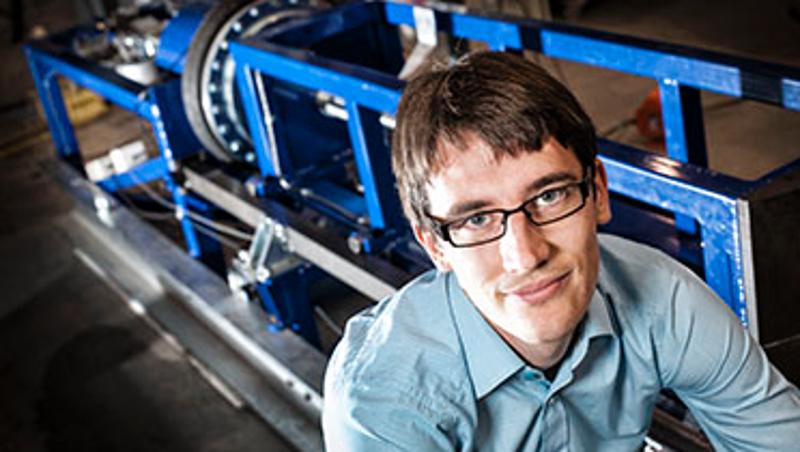
Crashing into a road safety barrier can be a killer which is why a QUT engineer has developed an innovative "crash test" to assess the impact of a collision making it easier to develop new, improved and safer designs.
Rory Gover, from QUT's Science and Engineering Faculty, has designed a testing rig that assesses the performance on impact of roadside barriers.
"Run-off road crashes are a major cause of death and injury on Australian roads and the potential for harm significantly increases along roadwork zones," Dr Gover said.
"Road safety barriers are commonly used to safely control and redirect vehicles and have been effective in reducing the crash casualty severity on high speed roads by 90 per cent.
"But when a crash does occur the outcome can be fatal."
Dr Gover said crash testing road safety barriers was costly and time-consuming and the introduction of tighter safety standards, had made testing requirements tougher.
"The crash performance and impact behaviour of road safety barriers has traditionally been assessed experimentally in full-scale vehicle crash tests," Dr Gover said.
"These tests require a vehicle to impact a large number of barriers and tend to be considerably expensive and resource intensive.
"For this reason the tests are unsuitable for the assessment of a barrier in its early stages of development or for minor design changes."
But with Dr Gover's rig, which uses advanced sensors that record to a computer, it is possible to accurately test the performance of road safety barriers in a much more cost-effective way.
"The sensors measure movement, velocity and acceleration with the information being related to a computer which allows accurate computational modelling to be undertaken," he said.
"This allows conceptual and mathematical models to be used in conjunction with advanced modelling techniques to better understand the behaviours of road safety barriers during impact.
"This information can then be used to design and develop road barriers that are safer on impact.
"Using this system we are now able to assess new barrier designs and any minor design improvements before we undertake a full-scale vehicle crash test."
Now Dr Gover has completed his PhD, the rig is being used for other impact testing at QUT.
"While I used it to specifically assess an impact on water-fill road safety barriers, the same equipment and technology is being used to test the impact on composite building structures but there are plenty of other uses for it as well," he said.
RELATED STORIES
How a one-inch plastic pipe could stop an inland tsunami and power a village
Stop - Go: Controlling the dangers at roadwork sites
Media contact:
Sandra Hutchinson, QUT Media (Tue, Wed, Fri), 07 3138 9449 or media@qut.edu.au
After hours, Rose Trapnell, 0407 585 901


